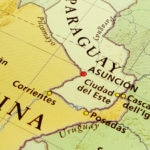BBVA Research: “Latin America’s slowdown will bottom out this year, and will start to pick up gradually in 2017”
According to BBVA Research’s latest report, Latin America’s slowdown process, which started in 2012, will bottom out this year, with a decline in activity of -0.9%, before giving way to positive GDP growth rates in 2017 of 1.8%. This increase in activity will be driven by growth in both public and private investment, especially in Argentina, Peru and Colombia, as well as stronger activity in the foreign sector, which will benefit from recent sharp currency depreciations and the gradual recovery in commodity prices.

During the presentation of the latest Latin America Economic Outlook report, Juan Ruiz, BBVA Research Chief Economist for South America, said that growth will be unevenly spread across the region. “In countries of the Pacific Alliance (México, Colombia, Peru and Chile) economic activity will grow an average 2.7% in 2016-17, in contrast with the recession that will affect Brazil and Argentina this year. In 2017 Peru, Argentina, Colombia and Paraguay will grow at the highest rates in the region.”
According to Juan Ruiz, “confidence indicators will remain weak in most countries, with high inflation and slow job markets.”
Ups and downs in growth
The Latin America Situation Report indicates that the orderly adjustment process of Andean economies is expected to continue, after the sharp decline of export revenues. Specifically, Colombia’s growth rate forecast for 2016 was revised up from 2.0% to 2.4% on the back of solid consumption performance and spiking oil prices. Colombia’s GDP is expected to grow by 3.0% in 2017, on the back of public investments in infrastructures and by private investments in the mining and the industrial sectors. Peru’s GDP growth forecasts for 2016 and 2017 remain unchanged at 3.6% and 4,3%, respectively, supported by mining (2016) and infrastructure projects (2017). Chile’s outlook remains at 1.7% in 2016, but with lower investment in the mining and real-estate sectors, offset by higher public expenditure. The forecast for 2017 is cut from 2.0% to 1.8%.
“Confidence indicators will remain weak in most countries, with high inflation and slow job markets”
Likewise, Mexico keeps a moderate level of activity and BBVA Research expects growth rates of 2.6% in 2016 and 2017, although with a downward bias due to weak activity in the U.S., cuts in public spending and interest rate hikes.
In the meantime, in Brazil, political noise continues weighing down on the economy, despite confidence levels and commodity prices showing a slight recovery, offset by the currency’s appreciation. Thus, the forecast of -3.0% is upheld for 2016, with a slight – 0.9% - recovery in 2017.
On the other hand, the macroeconomic rebalancing process in Argentina is taking a bigger-than-expected toll on activity trends in 2016, which has led BBVA Research to revise down its estimate from –0.4% to -1.0%, as a result of high contraction of activity during the first-half of the year, inflation growth and the necessarily contractive tone of the country’s monetary policy.
The slow recovery of commodities
BBVA Research expects the prices of the region’s main commodities to continue at relatively low levels in coming months. However, in some cases, supply factors resulting from changing climate conditions, such as in the case of soy, could lead to a price hike. Also, BBVA Research estimates that gradual cuts in oil production could lead to a slight recovery in oil prices in the mid-term. As regards copper, no additional price drops are expected, as current prices are almost at production cost levels.
“Regarding exchange rates, although depreciation pressures should continue showing further down the line, there is room for slight appreciation in some countries, such as Chile, Colombia and Mexico, whose currencies, in our opinion, are relatively undervalued with respect to their equilibrium level, once markets absorb the FED’s monetary decisions. The slight recovery perspectives in commodity prices and, in some cases, economic activity, also seem to back this vision,” said BBVA Research’s Chief Economist for South America.
More lax central banks
As regards inflation, the report indicates that, although it will remain high and above the targets of Central Banks - with the exception of Mexico and Paraguay – it has been losing steam in most countries, mainly due to lower exchange rate pressure and the relative weakness of internal demand. The exceptions have been Colombia, Argentina and Uruguay, but inflation is expected to decline in the first two countries.
The more positive dynamics of inflation have led Central Banks in many countries to keep interest rates unchanged. Also, economic activity weakness has left no space for applying stricter monetary policies. However, BBVA Research expects authorities in Colombia, México and Argentina to keep on increasing the reference rate. On the other hand, it expects interest rate cuts in Chile and Brazil.
Risks decline
For BBVA Research, China and an eventual interest rate hike by the Federal Reserve remain the biggest sources of external risks, although these risks have been somewhat alleviated. In first place, the Asian country’s economic activity is picking up and, on the other, the increase of interest rates by the FED will be more gradual than expected, which should favor the influx of capitals in the region.
According to the Latin America Economic Outlook report, the region also faces its share of internal risks, related to the political process in some countries, low confidence and possible delays in some infrastructure investment processes.